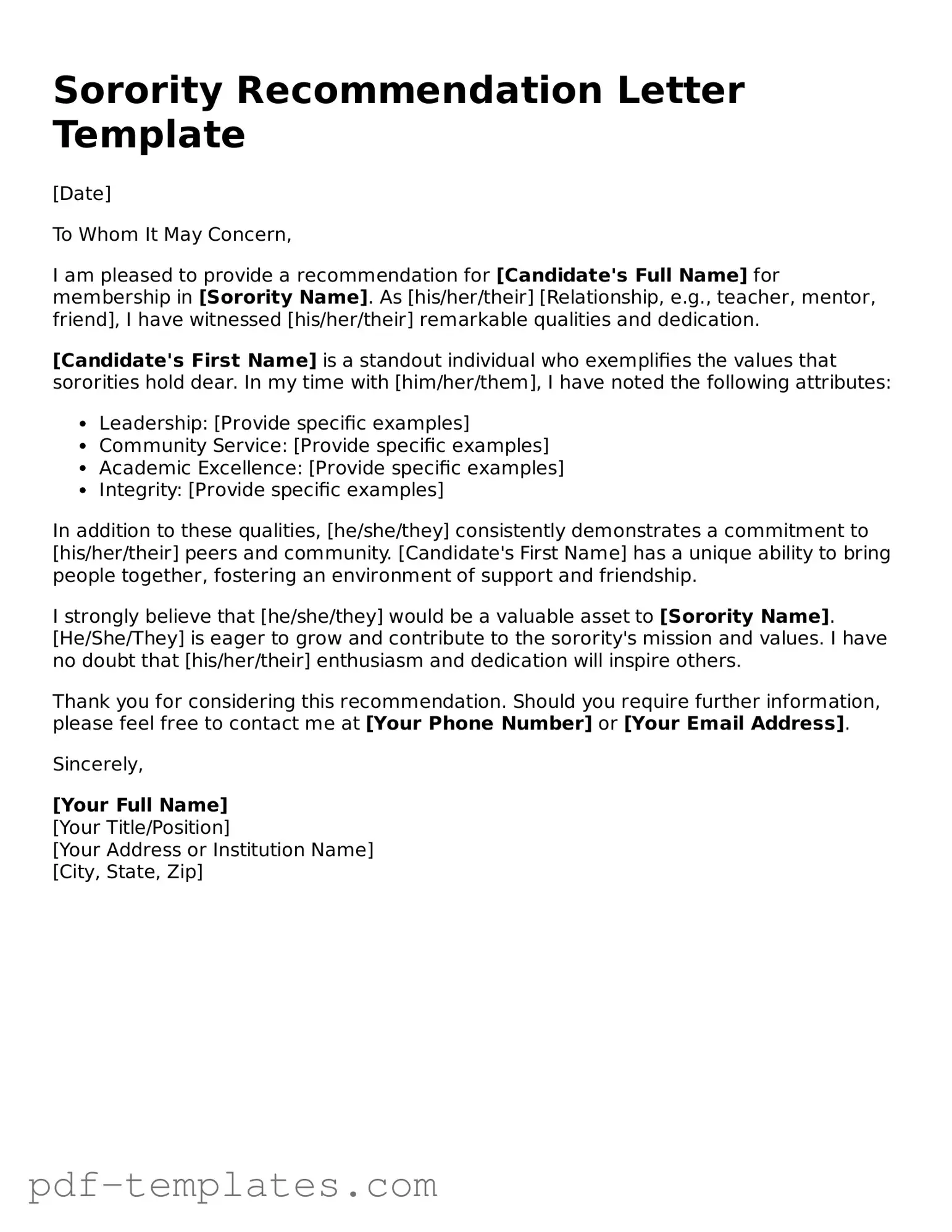The Sorority Recommendation Letter form shares similarities with the College Application Recommendation Letter. Both documents serve the purpose of providing a personal endorsement from someone who knows the applicant well. In the case of the college application, this letter often comes from a teacher, counselor, or community leader. It highlights the student’s achievements, character, and potential for success in a college environment, just as the sorority recommendation letter emphasizes qualities that would make a candidate a good fit for the sorority.
Another document akin to the Sorority Recommendation Letter is the Job Reference Letter. This letter is typically provided by a former employer or colleague and focuses on the professional skills and work ethic of the candidate. Like the sorority letter, it aims to present the individual in a positive light, outlining their strengths and suitability for a specific role or organization. Both letters rely on the credibility of the writer to enhance the applicant's profile.
The Character Reference Letter is also similar to the Sorority Recommendation Letter. This document is often requested by individuals seeking to demonstrate their personal qualities to potential employers, landlords, or organizations. It provides insights into the applicant's integrity, reliability, and interpersonal skills. Just as in sorority letters, the emphasis is on the applicant's character and how they interact with others, making it a valuable tool for personal endorsements.
The Graduate School Recommendation Letter aligns closely with the Sorority Recommendation Letter as well. Graduate programs often require candidates to submit letters from professors or professionals who can speak to their academic abilities and readiness for advanced study. Both types of letters aim to convey the applicant's qualifications and suitability for a specific environment, whether it be a sorority or a graduate program.
The Fellowship Recommendation Letter bears similarities as well. This document is often required for candidates applying for fellowships or scholarships. It highlights the applicant's achievements, potential, and contributions to their field or community. Much like the sorority recommendation, it seeks to persuade the reader of the candidate's merit and fit for a particular opportunity, relying on the writer's perspective and experiences with the applicant.
The Membership Recommendation Letter for professional organizations also resembles the Sorority Recommendation Letter. These letters are typically written by current members who can vouch for an applicant's qualifications and alignment with the organization’s values. Both documents aim to support the applicant's case for membership, emphasizing their skills, character, and commitment to the group’s mission.
Lastly, the Volunteer Reference Letter is comparable to the Sorority Recommendation Letter. This document is often used by individuals applying for volunteer positions or community service opportunities. It highlights the applicant's dedication, skills, and contributions to volunteer work. Similar to the sorority letter, it underscores the applicant's commitment to serving others and their ability to work well within a team, making it a valuable endorsement in both contexts.
